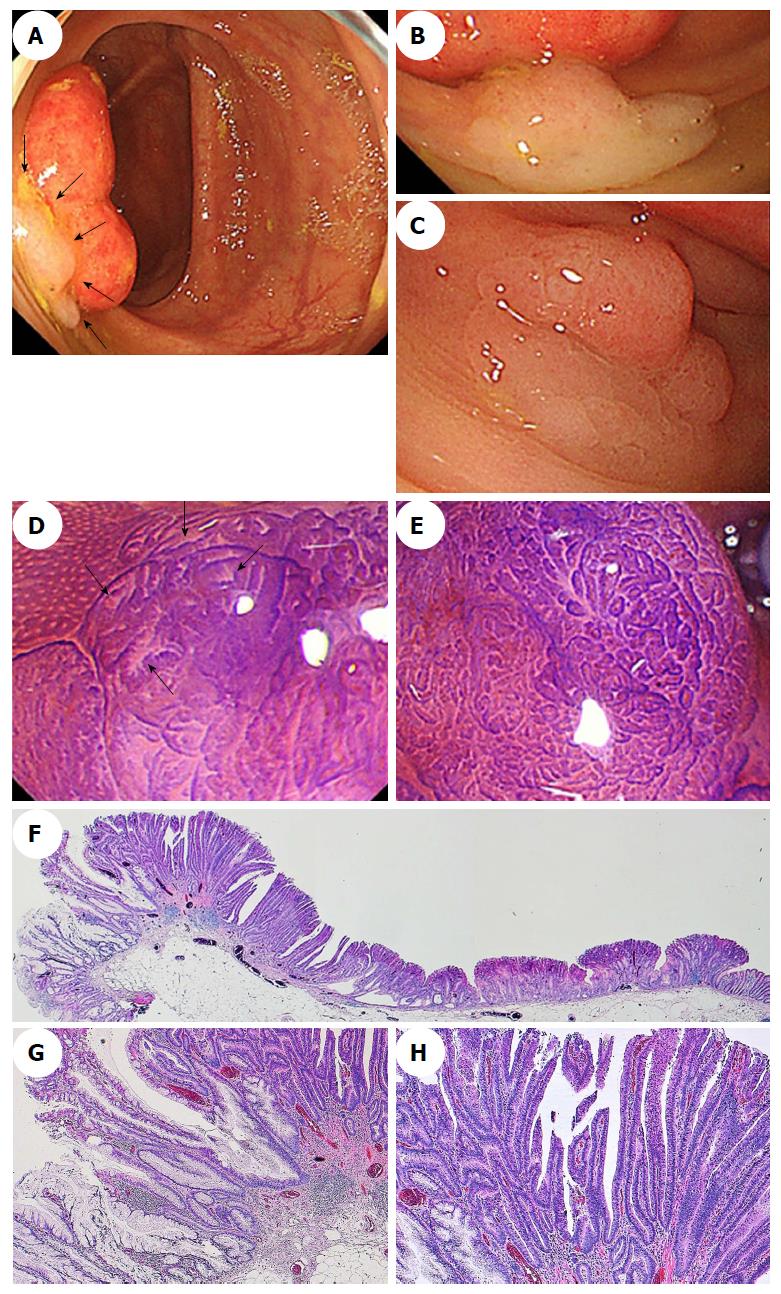Copyright
©The Author(s) 2018.
World J Gastroenterol. Aug 7, 2018; 24(29): 3250-3259
Published online Aug 7, 2018. doi: 10.3748/wjg.v24.i29.3250
Published online Aug 7, 2018. doi: 10.3748/wjg.v24.i29.3250
Figure 5 Endoscopic images of a sessile serrated adenoma/polyp with high-grade cytologic dysplasia in a representative case.
A-C: A conventional endoscopic view using white-light imaging. A: An endoscopic image shows a pale-color, flat-elevated lesion covered with mucus at the ascending colon (arrows). B: The lesion is covered with mucus cap. C: After washing the target lesion to sufficiently remove mucus, a flat-elevated lesion that had a 13-mm diameter and a dome-shaped double elevation can be clearly seen. The dome-shaped area is slightly red-colored. D and E: Magnifying chromoendoscopic views using crystal violet staining. D: A type II-open pit pattern is partly evident in the edge of the lesion (arrows). E: Type VI-mild pit pattern consisting of areas with irregular pits can be observed at the dome-shaped area. We endoscopically diagnosed the lesion as an SSA/P with cytologic dysplasia, and achieved an en bloc resection by performing an endoscopic mucosal resection. F-H: Histopathologic findings with hematoxylin-eosin staining of the resected specimen. G: Crypts with a serrated architecture exhibit irregularly dilated crypts, irregularly branching crypts, and horizontally arranged basal crypts, corresponding to SSA/P. H: A high-power view shows conventional adenomatous high-grade dysplasia with cytological atypia and architectural dysplasia in the dome-shaped area. The lesion was pathologically consistent with an SSA/P with high-grade cytologic dysplasia. SSA/P: Sessile serrated adenoma/polyp.
- Citation: Murakami T, Sakamoto N, Nagahara A. Endoscopic diagnosis of sessile serrated adenoma/polyp with and without dysplasia/carcinoma. World J Gastroenterol 2018; 24(29): 3250-3259
- URL: https://www.wjgnet.com/1007-9327/full/v24/i29/3250.htm
- DOI: https://dx.doi.org/10.3748/wjg.v24.i29.3250









